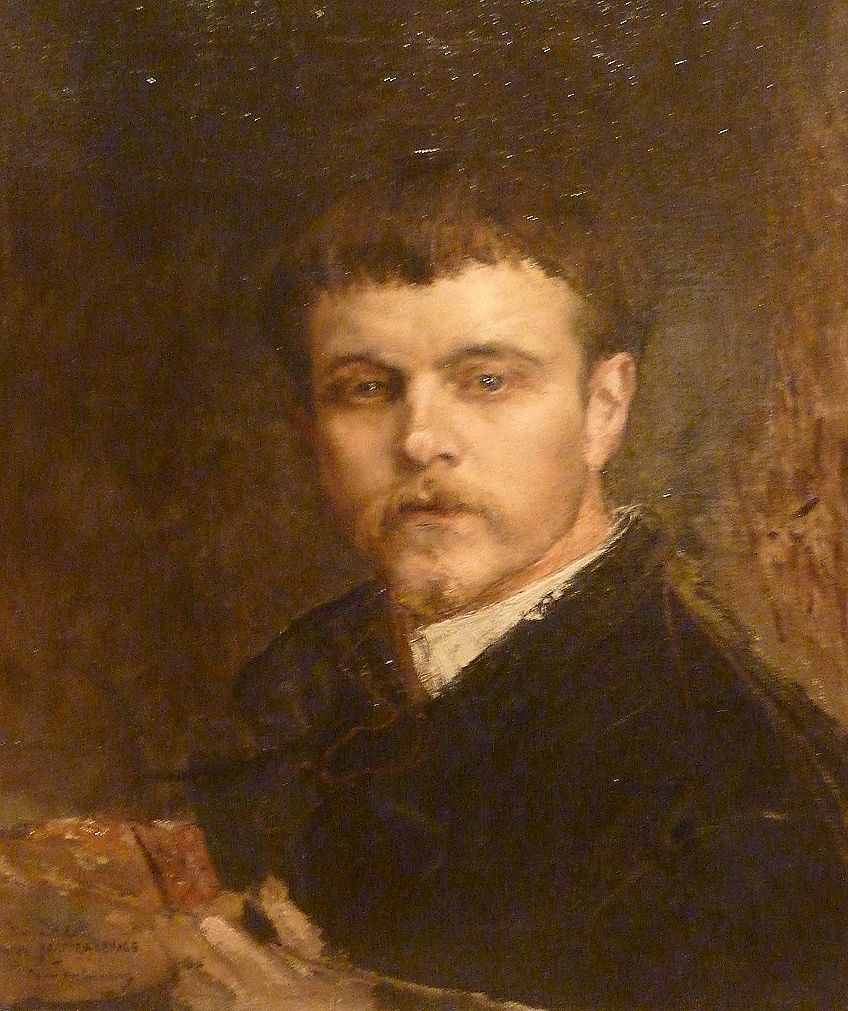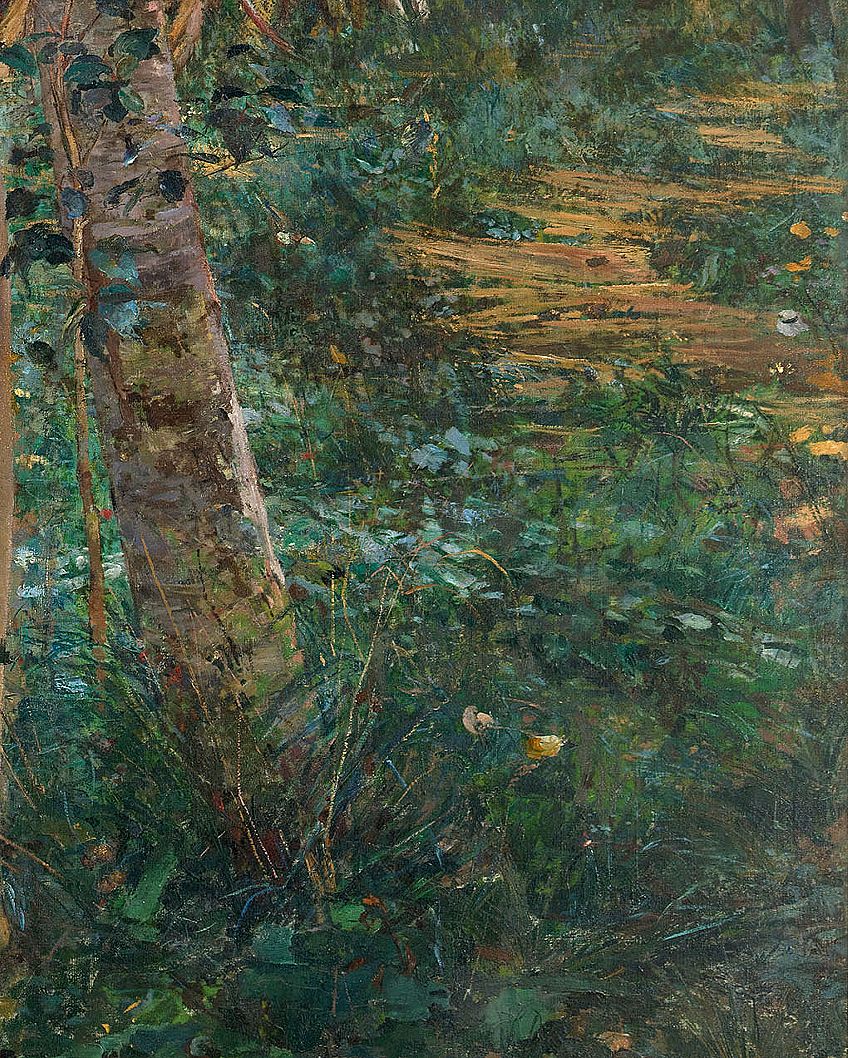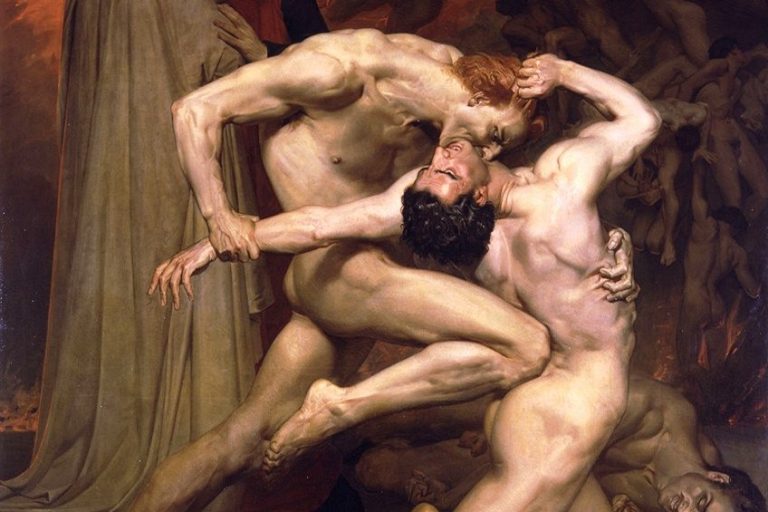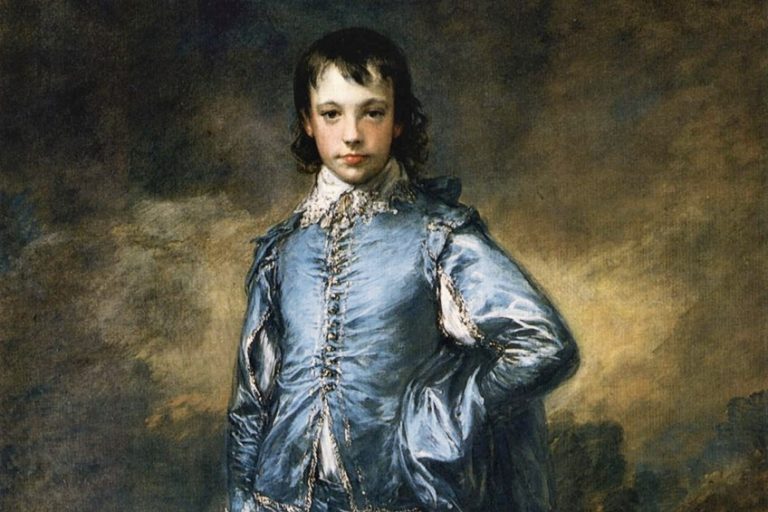“Joan of Arc” Painting by Jules Bastien-Lepage – A Formal Analysis
Joan of Arc was a popular figure in French history, who is known throughout the world for her brave character. She is often the main subject of artworks that celebrate her honor, one of which was the renowned Joan of Arc (1879) painting by Jules Bastien-Lepage, which we will unpack further in this article. Keep reading to learn more about the brave woman who spearheaded the French army into war and became an iconic symbol of victory for French troops!
Artist Abstract: Who Was Jules Bastien-Lepage?
Jules Bastien-Lepage was born on November 1, 1848 and lived until December 10, 1884. Jules Bastien-Lepage was a French artist from Damvillers in Meuse in France and reportedly enjoyed art from a young age. He was taught the basics of art by his father, who was also an artist. He went on to study at Verdun and then at the École des Beaux-Arts in Paris, becoming known as one of the leading artists of Naturalism with a large focus on portraits, landscapes, and most notably, rural scenes featuring peasants. Some of his artworks include Haymaking (Les Foins) (1877), October (1878), and Young Girl (1881).
Bastien-Lepage took a strong interest in Joan of Arc, exploring new representations for the celebrated figure. It was around the time when he painted a portrait of Joan’s biographer, Henri Alexandre Wallon, that he began experimenting with other forms of representing her. His approach evolved from the traditional depiction of Joan as kneeling in prayer to scenes of the woman at her parents’ orchard, as a symbol of the virgin warrior.

Joan of Arc (1879) by Jules Bastien-Lepage in Context
Since the fifteenth century, Joan of Arc has been a dominant figure in France, representing the victorious spirit of the woman who was “divinely guided” into battle. The Joan of Arc painting by Jules Bastien-Lepage is an oil painting that tells a historical tale, not necessarily just one, but two important tales. In the painting, Bastien-Lepage portrays Joan of Arc as a peasant girl standing in her parents’ garden, while receiving divine guidance from three saints in the background. The contextual analysis below will explore this in more detail, followed by a formal analysis looking at the artistic composition and subject of the work.
| Artist Name | Jules Bastien-Lepage (1848 – 1884) |
| Date | 1879 |
| Medium | Oil on canvas |
| Associated Movements, Themes, and Styles | Naturalism, genre painting, and historical painting |
| Dimensions (cm) | 254 x 279.4 |
| Where It Is Housed | The Metropolitan Museum of Art, New York City, United States |
| Sale Price | $23,700 (1889) |
A Contextual Analysis: A Brief Socio-Historical Overview
There are two historical events depicted in the Joan of Arc painting by Jules Bastien-Lepage, one of which is evident and the other, is simply alluded to. The latter event is connected to the events that took place surrounding the production of the painting but first, let us explore who Joan of Arc was.
Widely considered a heroine, saint, and martyr, Joan of Arc was born in Domrémy in France, her birth year believed to be 1412. She lived during the Hundred Years’ War, which took place between France and England. Both countries engaged in a prolonged tug-of-war for power that eventually culminated in France’s victory. When Joan of Arc was around 13 years of age, she reportedly experienced visions and heard voices from God, instructing her to be a part of leading what was known as the Siege of Orléans.
Many sources claim that Joan of Arc experienced these voices in her garden and that they belonged to Saint Margaret, Saint Michael (known also as the Archangel Michael), and Saint Catherine. Joan of Arc was accused of various crimes and burned at the stake. Although it cost her life, Joan of Arc’s role was that of a visionary and catalyst for change within the war between her home country and England. The Franco-Prussian War, which lasted between 1870 and 1871, reportedly sparked a resurgence of the ideals that Joan of Arc represented.
As France lost to Germany, Joan of Arc became a symbol of Nationalism, which is recognized as one of the inspirations behind Jules Bastien-Lepage’s painting of Joan of Arc in 1879.
A Formal Analysis: A Brief Compositional Overview
The formal analysis below will reveal more about the subject matter behind the Joan of Arc painting by Jules Bastien-Lepage and some of the stylistic details according to the elements and principles of art. By engaging with a formal analysis of the painting, you can gain insight into the perceived character of Joan of Arc, as well as Bastien-Lepage’s treatment of the color to express his view of her.

Subject Matter: Visual Description
The Joan of Arc painting by Jules Bastien-Lepage depicts the figure of Joan of Arc to the right, positioned in the foreground, as the main subject. Her head is tilted to her left (our right) and she stares into space, as if in deep concentration. Interestingly, the artist’s cousin Marie-Adèle Robert was the model for the figure of Joan of Arc. Her left arm appears outstretched to her side while her left hand appears to be holding onto a portion of a tree as her right arm hangs at her side. Part of her feet are visible from her long skirt, what appears to be her left foot, and her toes appear to be curling and clenched into the earth beneath it.
Her body position indicates that she is in the process of experiencing the vision and voices that have come to identify her historical and heroic tale.
The surroundings depict a garden area with a house in the background to the left. Interestingly, Bastien-Lepage depicted his family’s garden. To the left of the composition and further into the background is a wool spinning wheel and a chair that appears to have been knocked over, possibly while she was getting up as the vision occurred to her. In the left middle ground are three angelic figures, barely visible, suspended in mid-air. These figures are the saints who visited Joan of Arc during her vision, namely Saint Michael depicted in full armor on the right, who offers Joan of Arc a sword, and to the left are the two saints, Margaret and Catherine. Bastien-Lepage’s inclusion of the saints was intended to portray Joan’s spiritual awakening, with Saints Michael, Catherine, and Margaret encouraging her to stand up against the English invaders.
An Analysis of Color
The color palette of the painting is composed of mostly neutral, earthy, and muted colors such as whites, greens, browns, the faded blue of Joan’s blouse, and the subtle gold and white shades of the saints. There appears to be an unknown light source in the composition too, which seemingly provides an overall lighting effect around the composition.
Perhaps this was the aura of Joan’s vision, which provides a sense of tension to the viewer to speculate what kind of divine source brought these visions to Joan of Arc. In the 19th century, there was also a stylistic preference among French art circles for Realism, as well as divisions among artists for Impressionism and a need to break away from the styles promoted by the Salon.

A Textural Analysis
The painter, Jules Bastien-Lepage, was known for his naturalistic depictions and in the St Joan of Arc painting, there are various textural details that imply the natural environment. Some of the textural contrasts include the tree bark’s rough texture and the stony texture of the house in the background. These can be compared to the softer folds of Joan’s clothing and the ethereal auras of the saints.
All the textures combined provide the composition with its characteristic “photographic” or “realistic” qualities that have been widely attributed to Bastien-Lepage’s art style.

Shape and Form
There are many organic forms in the Joan of Arc painting by Jules Bastien-Lepage and like the above-mentioned lines, there is also a subtle contrast between the geometric shape of the house in the background and the organic forms of the vegetation in the mid-ground.

Line
There are various types of lines implied in the Joan of Arc painting by Jules Bastien-Lepage. For example, one can recognize the vertical linearity of Joan’s standing figure juxtaposed by the tree next to her, which is complemented by the three vertical tree branches to the right, as well as the structure of the spinning wheel.
Additionally, there are various other diagonal lines created by the surrounding foliage, as well as more geometric lines from the house contrasting with the organic lines from the natural environment.

Space
Jules Bastien-Lepage places Joan of Arc in the foreground, while portraying her in more detail than any other element in the painting. Furthermore, some sources suggest that Jules Bastien-Lepage created an implied space beyond the composition, along the path to the right and Joan’s left arm, which seemingly points to a deeper meaning in the narrative.

A Heroine Between Two Worlds
This article discussed the St Joan of Arc painting by Jules Bastien-Lepage in detail, outlining who Joan of Arc was and when she lived, as well as the artist’s choice of subject, as well as the socio-political climate of the painting. Other famous paintings that portray Joan of Arc in different settings include Joan of Arc at the Coronation of Charles VII (1851–1854) by Jean-Auguste-Dominique Ingres, which is on display as the Louvre Museum, Jeanne d’Arc (1903) by Albert Lynch, and The Vision and Inspiration (1907-1909) from the Joan of Arc series by Louis Maurice Boutet de Monvel at the National Gallery of Art.
What makes this painting by Jules Bastien-Lepage so special is that it is one of the most unique depictions of Joan of Arc since the 15th century, which saw many artists portray her in full armor. As one of the most iconic French military heroes, Joan of Arc’s image and character was popularized across France by 1871 to represent a united France.
Joan of Arc was considered a heroine for her bravery and leadership during the Hundred Years’ War and, although she was executed, she was immortalized in paintings, as a woman who inspired the world. This painting is a naturalistic rendering of how our protagonist stands in the throes of what was asked of her and what she was becoming, from spinning wool to a divine warrior!
Take a look at our Joan of Arc painting webstory here!
Frequently Asked Questions
Where Is the Joan of Arc Painting by Jules Bastien-Lepage?
The Joan of Arc painting by Jules Bastien-Lepage is currently held at the Metropolitan Museum of Art in New York City. It was bought by Erwin Davis in 1880 for $4,000, which was also the year it was exhibited at the Paris Salon. The painting then sold for $23,700 in 1889.
What Style Is Jules Bastien-Lepage’s Joan of Arc Painting?
Jules Bastien-Lepage was known for his photographic art style and his paintings that were part of the Naturalism art movement. He was also considered one of the leading proponents of this style. The Joan of Arc painting by Bastien-Lepage was created in a naturalist style that emphasized Joan’s spiritual awakening and divine inspiration to become a warrior.
Why Is Jules Bastien-Lepage’s Joan of Arc Painting Different from Other Depictions of Joan of Arc?
The Joan of Arc painting by Jules Bastien-Lepage has been described as ironic. This is because of the artist’s naturalistic and realistic style, as well as his portrayal of the scene that was accompanied by non-realistic subjects such as the saints. His depiction of Joan of Arc stands out because it represents her spiritual enlightenment to lead the French troops into battle and defend them against the English. At the time, most representations of Joan of Arc showcased her in full armor, as a warrior first.
Alicia du Plessis is a multidisciplinary writer. She completed her Bachelor of Arts degree, majoring in Art History and Classical Civilization, as well as two Honors, namely, in Art History and Education and Development, at the University of KwaZulu-Natal, South Africa. For her main Honors project in Art History, she explored perceptions of the San Bushmen’s identity and the concept of the “Other”. She has also looked at the use of photography in art and how it has been used to portray people’s lives.
Alicia’s other areas of interest in Art History include the process of writing about Art History and how to analyze paintings. Some of her favorite art movements include Impressionism and German Expressionism. She is yet to complete her Masters in Art History (she would like to do this abroad in Europe) having given it some time to first develop more professional experience with the interest to one day lecture it too.
Alicia has been working for artincontext.com since 2021 as an author and art history expert. She has specialized in painting analysis and is covering most of our painting analysis.
Learn more about Alicia du Plessis and the Art in Context Team.
Cite this Article
Alicia, du Plessis, ““Joan of Arc” Painting by Jules Bastien-Lepage – A Formal Analysis.” Art in Context. February 1, 2023. URL: https://artincontext.org/joan-of-arc-painting-by-jules-bastien-lepage/
du Plessis, A. (2023, 1 February). “Joan of Arc” Painting by Jules Bastien-Lepage – A Formal Analysis. Art in Context. https://artincontext.org/joan-of-arc-painting-by-jules-bastien-lepage/
du Plessis, Alicia. ““Joan of Arc” Painting by Jules Bastien-Lepage – A Formal Analysis.” Art in Context, February 1, 2023. https://artincontext.org/joan-of-arc-painting-by-jules-bastien-lepage/.











